The Making Of The Lexus LFA Supercar. An Inside Report, Chapter 4: Balance Of Power

In the preceding chapters, we followed the Lexus LFA from raw fiber to body, paint, and assembly. Today, the LFA gets its engine. Tomorrow, we’ll test it, and then, we’ll say good-bye to the LFA Workshop in Motomachi.
On its slow road to completion, the LFA travels down a main line, where it is met by components that come from smaller sidelines. One such subassembly is the LFA’s V10 engine. Covered by a thick sheet of plastic, it comes from Yamaha where it was built and assembled. The engine was a balancing act, in more ways than one.
Slowly, the LFA nears final completion
The engine sits behind the front wheels. The transmission, or rather transaxle, sits in the rear, balancing out to an ideal 48:52 front/rear weight distribution. Engine and transaxle are connected by a torque tube for a balance of lightness and durability.
The engine arrives pre-assembled from Yamaha
Through generous use of aluminum, titanium, magnesium and brain matter, the LFA’s engine is light. How light? I am unsuccessful in prying the engine’s weight out of the otherwise very forthcoming engineers. It will remain a secret until someone weighs the thing.
Mating ritual
“It makes no sense to save all that weight with composites, only to waste it on a heavy engine,” says Tanahashi. The LFA’s V10 is as small as a traditional V8, it is as light as a conventional V6, and yet delivers the power of a V12. The engine is light, but at 560 hp and 480 Nm (354 lb ft) of torque it certainly is no lightweight.
Here comes the power
The torque band of some engines is so peaky that it can do double duty as a Jayne Mansfield look-alike. Dyno the LFA, and it will draw a diagram as flat as a Japanese beauty: 90 percent of the LFA’s peak torque is available from 3,700 rpm all the way to the rev limiter. In this case, flat definitely is the sexier choice.
Chain of custody.
Speaking of the dyno, every LFA goes on one, not just to check the engine or the brakes, but even for such prosaic exercises as checking the accuracy of the speedometer.
How much torque?
One instrument appears to be banned from the LFA’s philharmonic symphony. There is no staccato sound of the pneumatic torque wrench. It would be too imprecise, I hear. Instead, each bolt is torqued with a digital, however manual torque wrench. After each bolt, the worker stops and makes notation on a sheet.
Mountain of evidence
To my bafflement, I learn that the torque for every bolt in the LFA is recorded on what is called an “evidence sheet.” Not just the torque of every bolt. Everything that is touched, assembled, hand-laid, bonded, adjusted, or checked in each and every LFA made receives an entry in an evidence sheet. The sheet is signed by the person that enters the data, and then it is signed again by a foreman.
50 years from now, the evidence will still be there: Miyoshi and Tanahashi are checking the files
Whenever one of the each of the 500 LFAs leaves Motomachi, administrator Mami Murofushi puts four heavy file boxes, filled with a collection of thousands of evidence sheets, on a shelf in an archive room a few steps away from the LFA Works. Aligned by build number, the file boxes will sit there at least for the next 50 years.
FRP is forever.
Why will the evidence be kept for more than 50 years? For one thing, because the LFA likely will last longer than that. Honestly, Tanahashi does not know how long the LFA will last.
“I feel the material could live permanently,” says Tanahashi. “To be safe, let’s say semi-permanently.” Looking at a semi-eternal service life, Tanahashi is not worried about end of life issues. Some people are. They paint a picture of rust-resistant carbon fiber bodies that will pile up on landfills half a century after they can be made in an affordable way. Tanahashi has thought of that as well and says that if and when the time comes, the carbon fiber LFA can be “crushed and the material can be used for building reinforcement.”
A week’s work, lined up for inspection
7:14.64
With that in mind, we travel to another hall at the northeastern end of the Motomachi complex. This is where cars receive a very intrusive physical before they get delivered. A full week’s worth of LFA production, all seven of them, are lined up for inspection.
One of the LFAs awaiting a physical is a Nürburgring Package version. The package is a $70,000 extra, and only 50 are being sold. I would not have noticed it, would Tanahashi not have pointed it out. It is the white one on the right.
Insert $70,000 right here
Those $70,000 buy you 11 additional horses. “That is the main difference,” says Tanahashi. The suspension has a different adjustment. There are little winglets on the side, and “slight changes inside of the engine room,” I hear.
Asked what those changes are, Tanahashi grins, he pops the hood and shows a silver oil filter, and a red-on black plaque that says “Handbuilt by Lexus LFA Works” instead of the regulation champagne-colored oil filter and plaque. If I had to ask …
Oil filter, special Nurburgring edition
“It is expensive, but it shaved 8 seconds off our Nürburgring lap time,” says Tanahashi, referring to the 7:14.64 Nordschleife lap time achieved on August 31, 2011.
Ignoring the lap times of three cars of dubious provenance, the LFA on regulation Bridgestone tires was the fastest production, street-legal car around the ring. For two weeks, it was. On September 14, a Dodge Viper ACR on Michelin Pilot Cup slicks came in two and a half seconds faster, and this is where things stand ever since.
I ask Tanahashi whether he will try again. He does not answer, and looks the other way.
Stay tuned for the final installment of The Making Of The Lexus LFA:
Monday, July 9: From A Bar To Bar None. How the LFA was born, and why it is made from carbon fiber.
Slowly, the LFA nears final completion
The engine arrives pre-assembled from Yamaha
Mating ritual
Here comes the power
How much torque?
Mountain of evidence
50 years from now, the evidence will still be there
A week’s work
Insert $70,000 right here
Oilcooler, special Nurburgring edition

Bertel Schmitt comes back to journalism after taking a 35 year break in advertising and marketing. He ran and owned advertising agencies in Duesseldorf, Germany, and New York City. Volkswagen A.G. was Bertel's most important corporate account. Schmitt's advertising and marketing career touched many corners of the industry with a special focus on automotive products and services. Since 2004, he lives in Japan and China with his wife <a href="http://www.tomokoandbertel.com"> Tomoko </a>. Bertel Schmitt is a founding board member of the <a href="http://www.offshoresuperseries.com"> Offshore Super Series </a>, an American offshore powerboat racing organization. He is co-owner of the racing team Typhoon.
More by Bertel Schmitt
Latest Car Reviews
Read moreLatest Product Reviews
Read moreRecent Comments
- Theflyersfan With sedans, especially, I wonder how many of those sales are to rental fleets. With the exception of the Civic and Accord, there are still rows of sedans mixed in with the RAV4s at every airport rental lot. I doubt the breakdown in sales is publicly published, so who knows... GM isn't out of the sedan business - Cadillac exists and I can't believe I'm typing this but they are actually decent - and I think they are making a huge mistake, especially if there's an extended oil price hike (cough...Iran...cough) and people want smaller and hybrids. But if one is only tied to the quarterly shareholder reports and not trends and the big picture, bad decisions like this get made.
- Wjtinfwb Not proud of what Stellantis is rolling out?
- Wjtinfwb Absolutely. But not incredibly high-tech, AWD, mega performance sedans with amazing styling and outrageous price tags. GM needs a new Impala and LeSabre. 6 passenger, comfortable, conservative, dead nuts reliable and inexpensive enough for a family guy making 70k a year or less to be able to afford. Ford should bring back the Fusion, modernized, maybe a bit bigger and give us that Hybrid option again. An updated Taurus, harkening back to the Gen 1 and updated version that easily hold 6, offer a huge trunk, elevated handling and ride and modest power that offers great fuel economy. Like the GM have a version that a working mom can afford. The last decade car makers have focused on building cars that American's want, but eliminated what they need. When a Ford Escape of Chevy Blazer can be optioned up to 50k, you've lost the plot.
- Willie If both nations were actually free market economies I would be totally opposed. The US is closer to being one, but China does a lot to prop up the sectors they want to dominate allowing them to sell WAY below cost, functionally dumping their goods in our market to destroy competition. I have seen this in my area recently with shrimp farmed by Chinese comglomerates being sold super cheap to push local producers (who have to live at US prices and obey US laws) out of business.China also has VERY lax safety and environmental laws which reduce costs greatly. It isn't an equal playing field, they don't play fair.
- Willie ~300,000 Camrys and ~200,000 Accords say there is still a market. My wife has a Camry and we have no desire for a payment on something that has worse fuel economy.



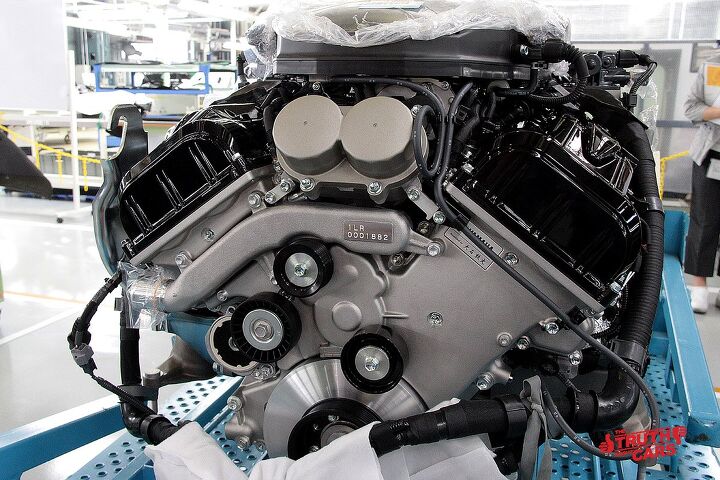





























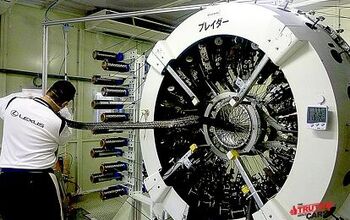
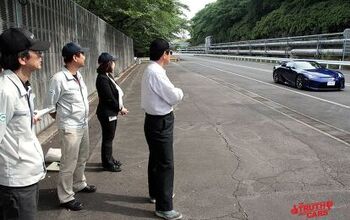

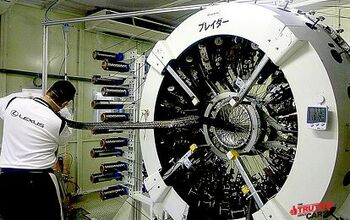
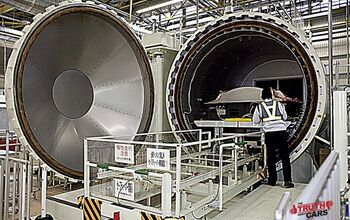
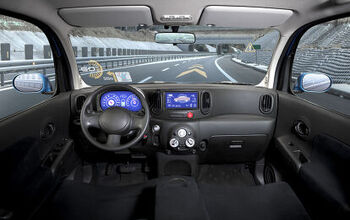









Comments
Join the conversation
I wonder why they won't disclose the weight of the engine. 1) They don't know. They never measured it. 2) Disclosing the weight would expose secrets about the construction and materials that are commercially sensititive and competitors could reverse engineer the whole thing if they just knew the weight. 3) They are giving a free iPAD to anyone who can correctly guess the weight. 4) They're too embarassed to tell you
Building an LFA comes down to one word: Craftsmanship BD